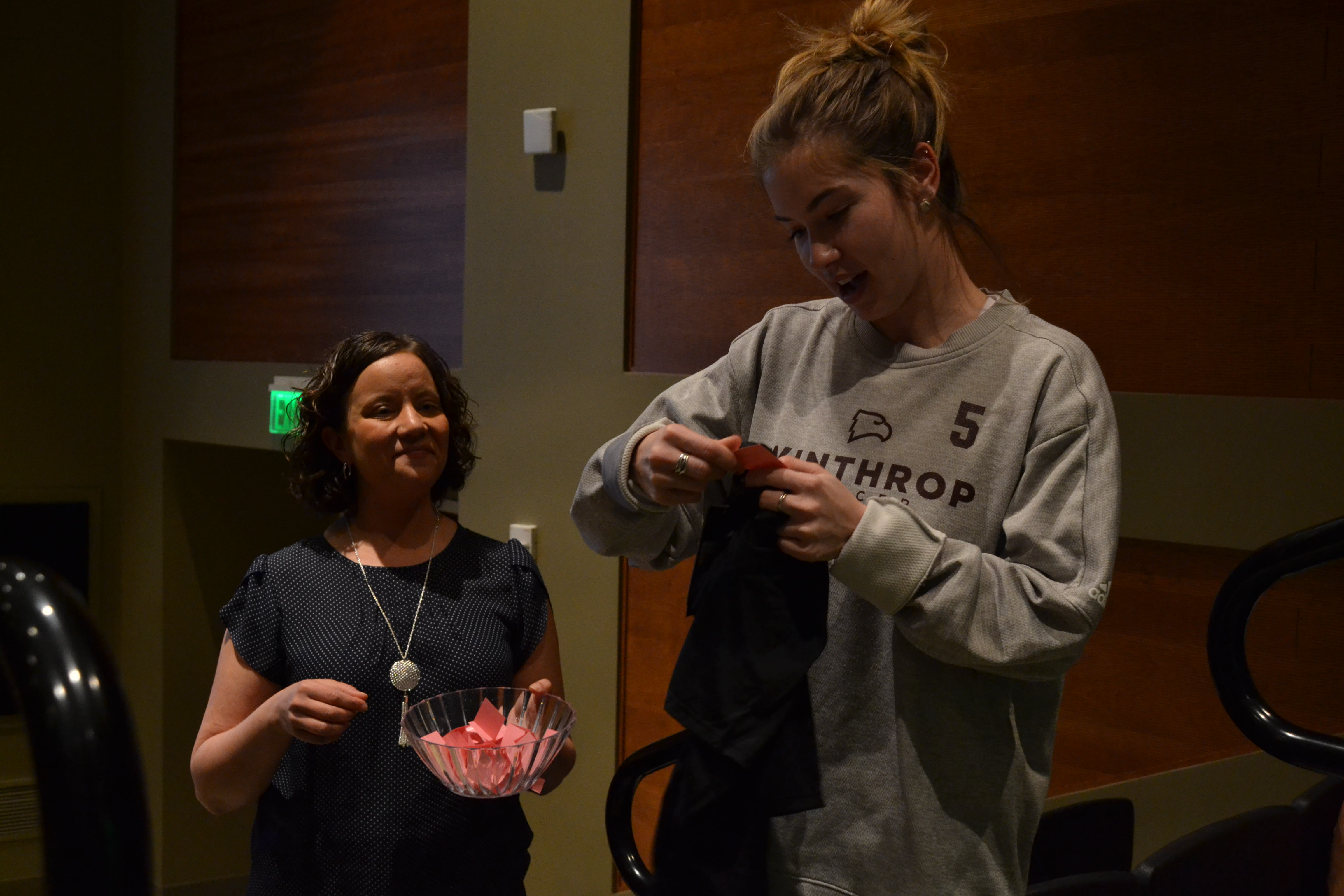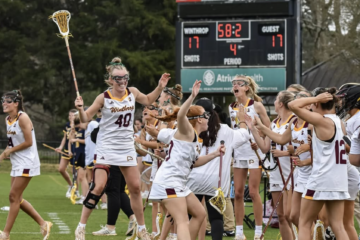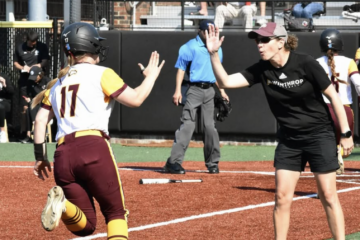On Friday, Feb. 28 in Dina’s Place, the international center sponsored a cultural event, Wide, Wide World of Basketball.
The event was held to inform students of the regional and global impact of basketball.
Dr. Dan Drane, PESH department’s sports marketing professor, led the presentation along with testimonies given from our international Eagles on the men’s basketball team.
At the start of the event, the audience was invited to participate in a Poll Everywhere, with questions to spark their knowledge of globalization, with basketball particularly in mind. “What is the first word you think of when you hear globalization?” Drane asked, with responses including ‘worldwide’, ‘differences’, ‘growing’, ‘connectedness’, along with other words.
The globalization in sport has increased, particularly in the realm of basketball, involving 38 states outside of the country being represented in the NBA. Two major impacts due to NBA’s globalization are; international players give back to their communities overseas and encouraging youth overseas.
Not only does globalization impact big, well-known leagues, but it also impacts the play of basketball at the collegiate level. Collegiate level teams have a big international representation in the states as well as impacting communities within their countries.
Tom Pupavac, from Geelong, Australia, is a center on the men’s basketball team. Pupavac grew up watching basketball back home in Australia which eventually led him to playing in the states as a Division I athlete.
“What got me into basketball was, I would go watch a lot of games back home [Australia] and those guys that I watched became my role models for me, all the guys I’m still in touch with these days and they inspire me in play,” Pupavac said.
Pupavac has impacted younger kids in Australia, encouraging them to follow their passion just like he did.
“Now we are role models to the kids that were like me back home and kind of got me into the love for that,” said Pupavac.
With the countries represented in the NBA, the most-represented countries home to 108 international players on opening-night rosters this year, other than the United States, were Canada, with 16 players, Australia, with nine players, France, with eight, Croatia seven, and Serbia six.
The most representation at the collegiate level are from Canada and Australia.
Players from around the globe travel to the United States to display their passion for the hardwood, either at the professional or collegiate level.
Winthrop sport teams have recruited more and more international student athletes within the past couple of years amongst every team. Representing their country on the men’s basketball team are Australia natives, Tom Pupavac and Kyle Zunic.
Traveling far away from home to be off at college can be an obstacle, leaving your family and hometown friends behind, but the Winthrop basketball program makes sure that not only internationals but everyone feels at home.
“What made me choose Winthrop was the family structure of this program and the whole school. It’s not a huge school but it’s really tight knit, a lot of people that you know,” Pupavac said.
Pat Kelsey, American head basketball coach for the Eagles since 2012, has resurrected a winning tradition for the Eagles in the Big South Conference.
“Coach Kelsey, his energy, his passion for the game, and passion for the team, the program, and the school, he loves every player, every student, and every faculty member here and it’s just a really great program to be a part of,” Pupavac said.
The social impact of globalized sport are culture blending, diversifying playing experience, experiential advantage, benefits school reputations and expands the talent pool. With the combination of these social impacts the Winthrop men’s basketball team becomes even more well rounded in their dynamic and play.
“The style play of basketball back home in Australia is a lot slower, but it’s a lot more skillful in the sense that you have to run a lot more plays, playing here is a lot more physical, a lot more fast-paced, but here you learn so many different things from each style of play, which I am really thankful to see both sides of that,” Pupavac said.
Immersing these players into different cultures, players from different countries allows for the Americans to learn from the internationals and vice versa.
Winthrop has done a good job at not only diversity in the classroom but diversifying the playing experience on the court and in the locker rooms on a sports team. Although these countries have their differences, bringing those aspects to the court educate players on the game of basketball on a global scale.
It is really about bringing different play styles to the court and learning how to execute each style to be a more well-rounded player in the game.
“Australia really focuses on team basketball where as in America it is more one on one style of play, when you come over here you really have to guard one on one and you have to have good moves that get you by the defenders. Whereas, in Australia we focus on a lot of plays, a lot of running stuff to get through the team, get a lot of people involved [to run plays and score points against their opponent],” Zunic said.
Photo: La J’ai Reed/ The Johnsonian




